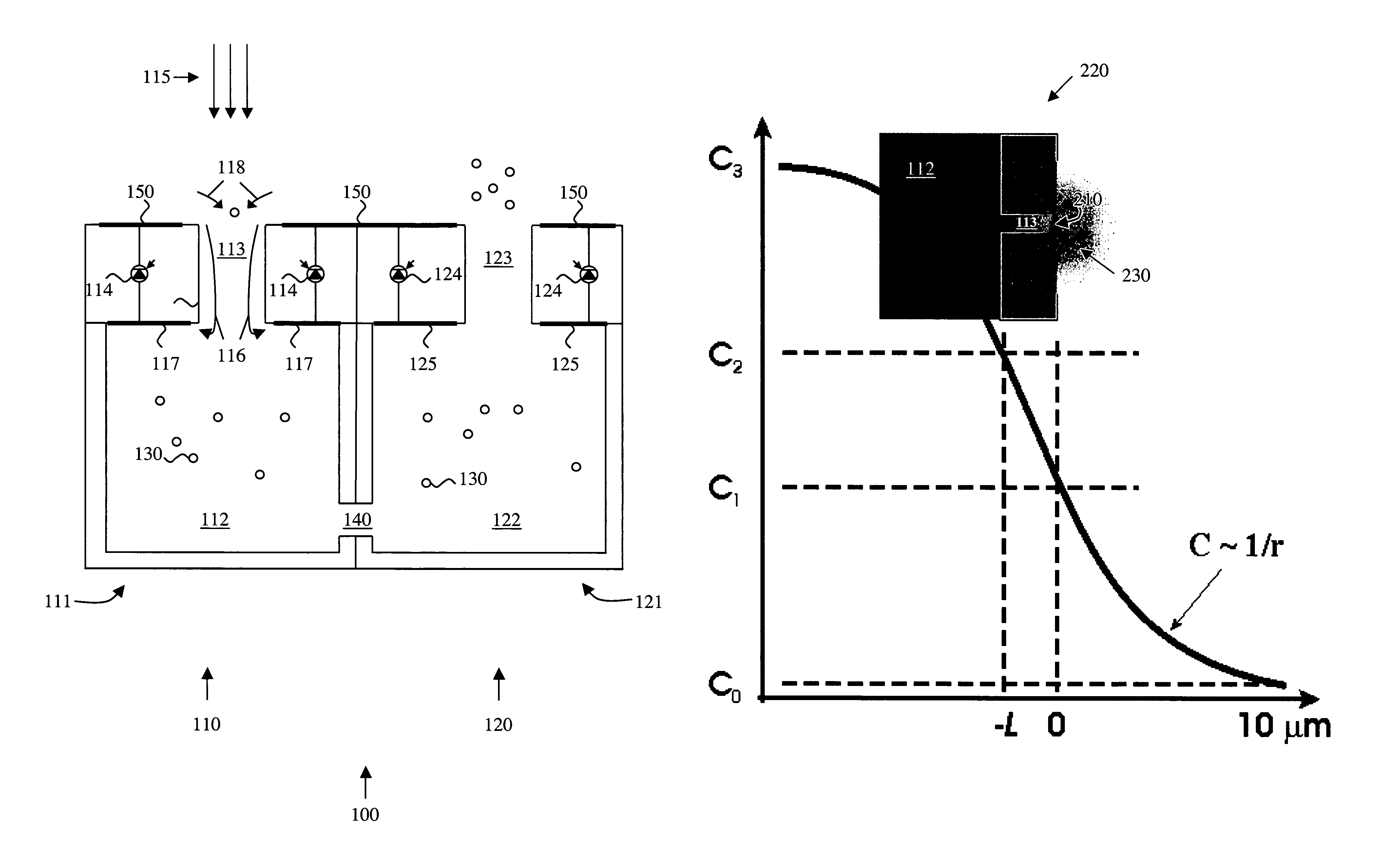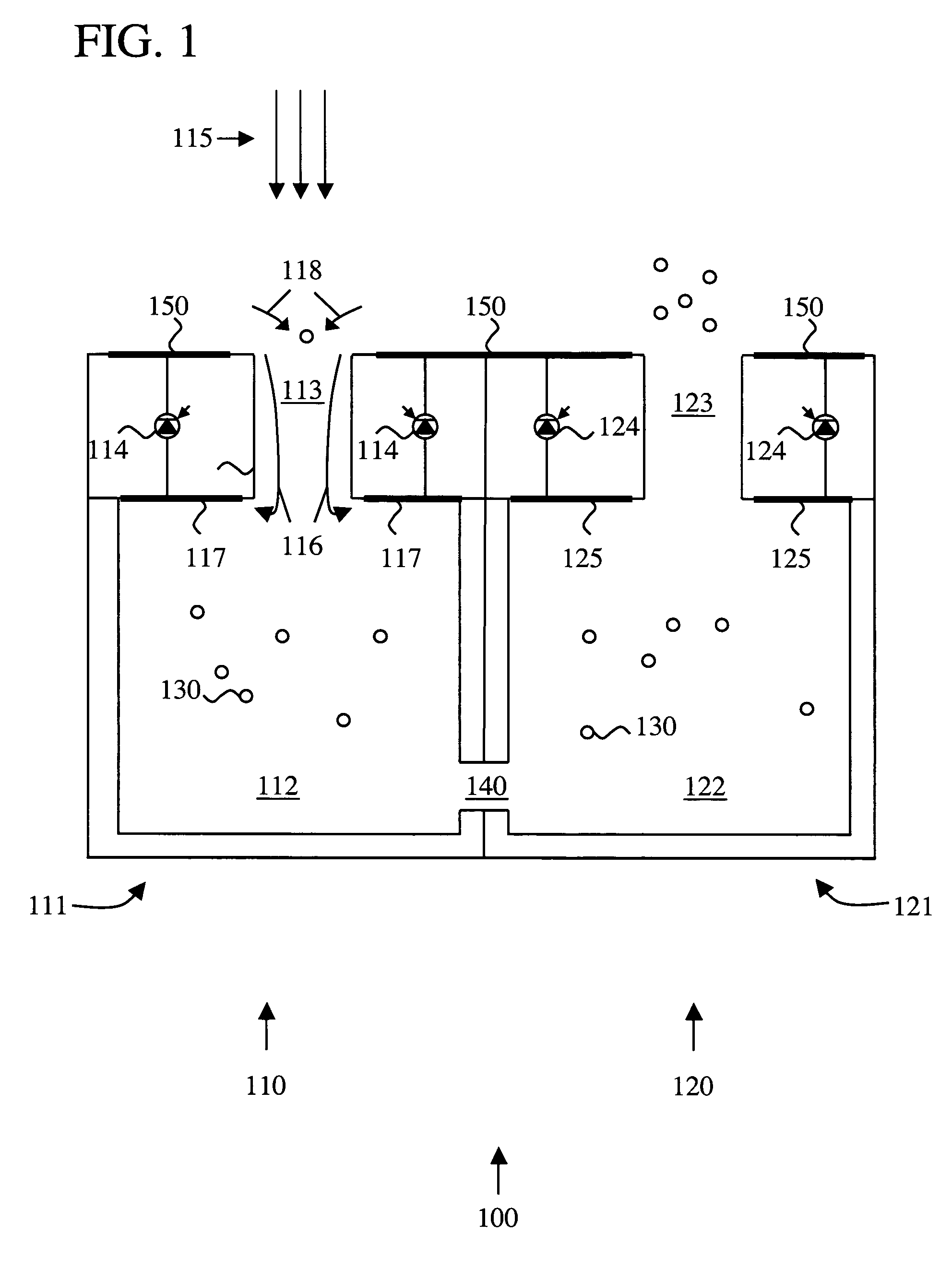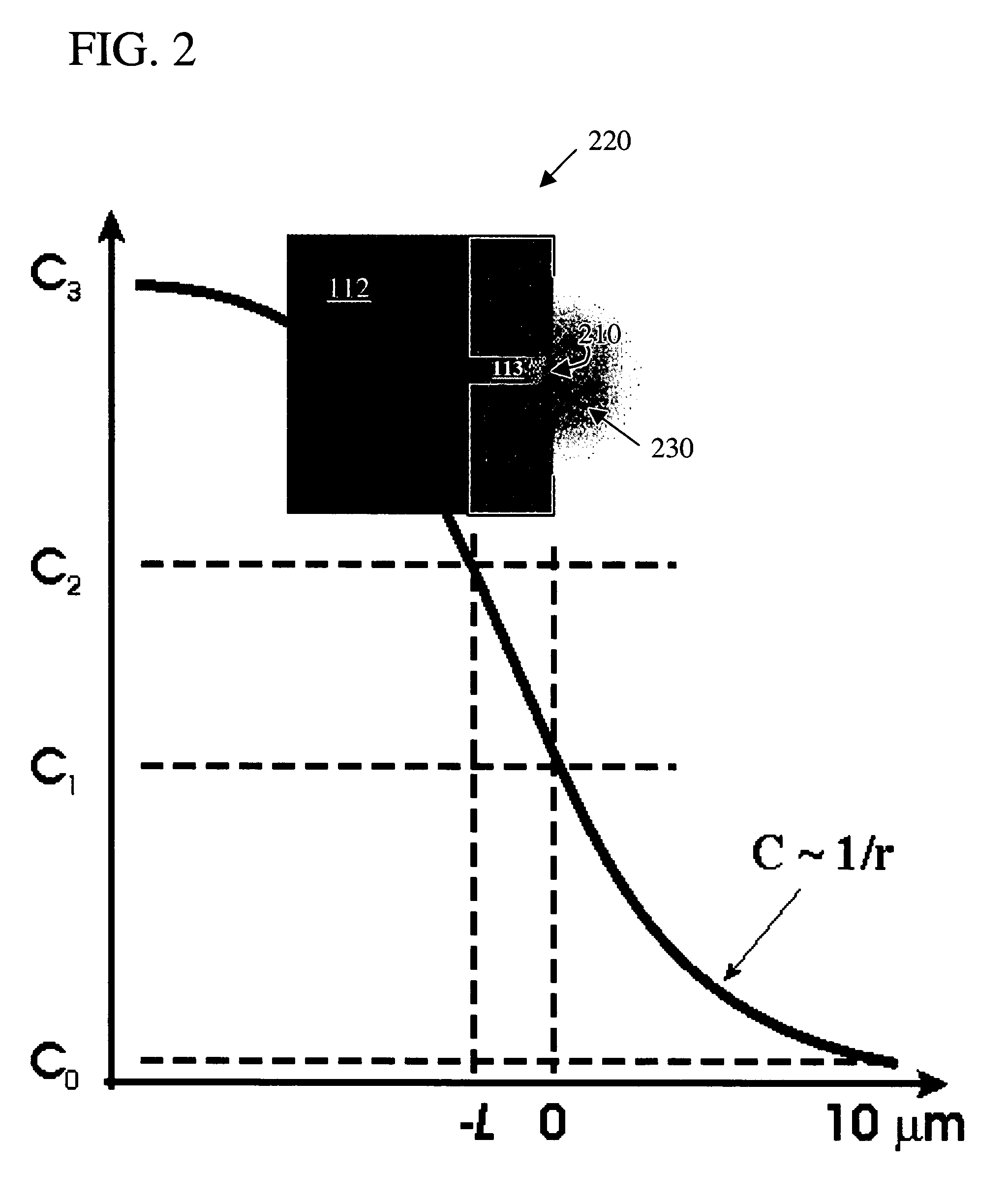Optically controlled microfluidic chip
a microfluidic chip and microfluidic technology, applied in the field of microfluidic retinal implants, can solve the problems of limited vision recovery, permanent damage to the photoreceptor, and ineffective treatment for most patients, and achieve the effect of reducing fluid emission, reducing emission, and precise and physiologically relevant manner
- Summary
- Abstract
- Description
- Claims
- Application Information
AI Technical Summary
Benefits of technology
Problems solved by technology
Method used
Image
Examples
Embodiment Construction
[0013]The present invention provides an optically controlled microfluidic chip for controlled release of fluid. The following sections provide details on the components, dimensions, and manufacture of the chip.
Pixels
[0014]The optically controlled microfluidic chip is made of one or more units or pixels. Each pixel contains a housing, an aperture in the housing, and a reservoir containing fluid that is connected to the aperture. Each pixel also includes an optical control for limiting emission of fluid through the aperture in response to light. Each pixel may be independently controlled by light, such that a spatial pattern of incident light will translate into a spatially controlled reduction in emission of fluid.
[0015]FIG. 1 shows an example of an optically controlled microfluidic chip 100. Optically controlled microfluidic chip 100 has two pixels 110 and 120. Each pixel includes a housing (111 and 121, respectively), a reservoir (112 and 122, respectively), and an aperture (113 an...
PUM
 Login to View More
Login to View More Abstract
Description
Claims
Application Information
 Login to View More
Login to View More - R&D
- Intellectual Property
- Life Sciences
- Materials
- Tech Scout
- Unparalleled Data Quality
- Higher Quality Content
- 60% Fewer Hallucinations
Browse by: Latest US Patents, China's latest patents, Technical Efficacy Thesaurus, Application Domain, Technology Topic, Popular Technical Reports.
© 2025 PatSnap. All rights reserved.Legal|Privacy policy|Modern Slavery Act Transparency Statement|Sitemap|About US| Contact US: help@patsnap.com



